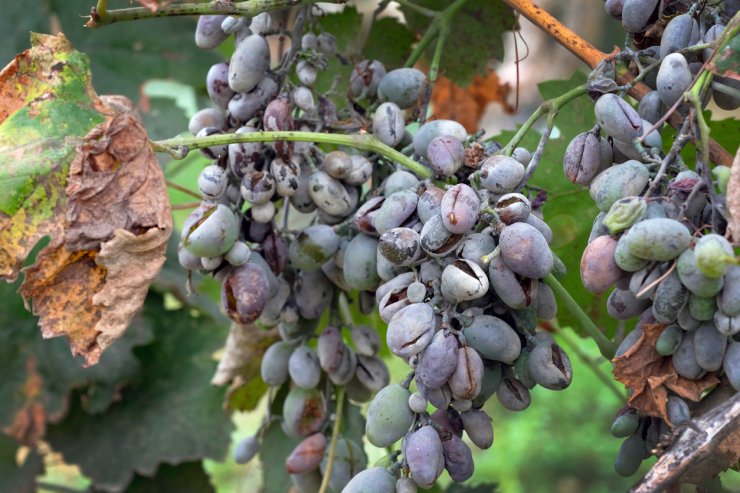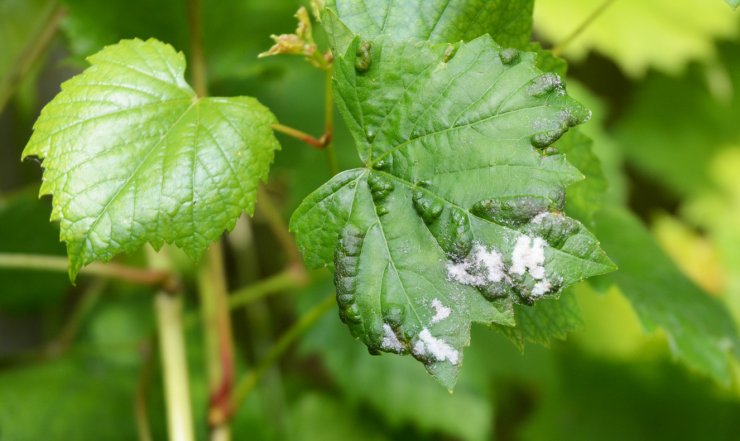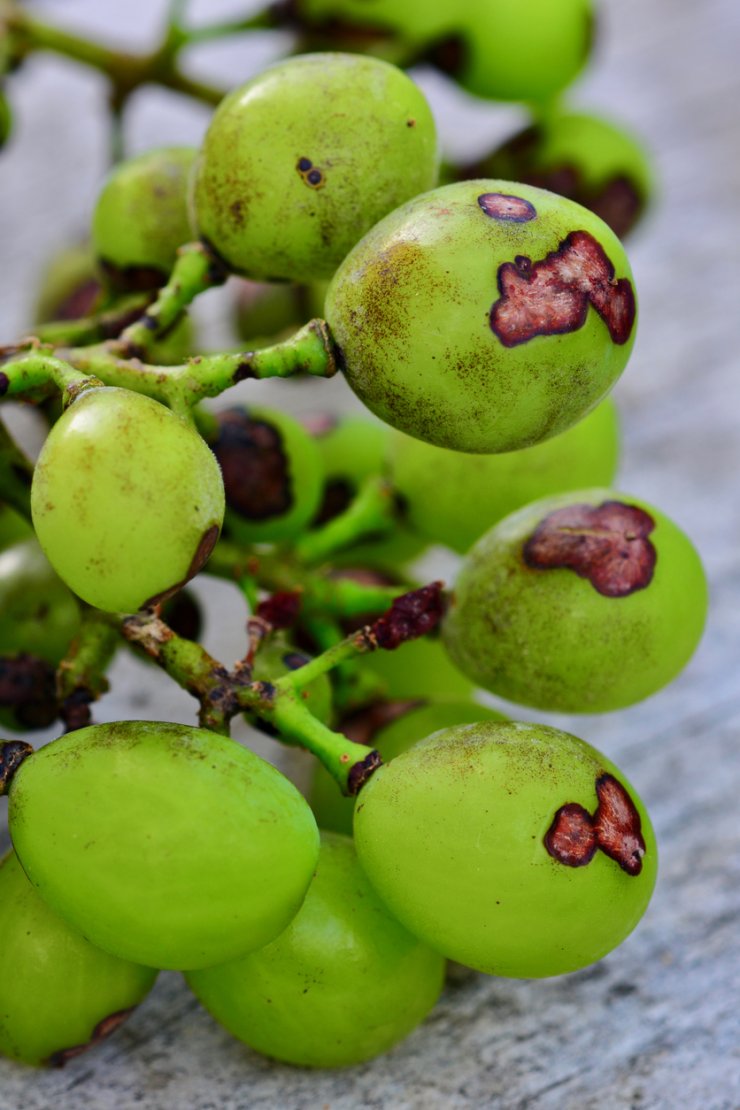
Grape leaf affected by downy mildew.
The most important thing you can do for your grapes is to stick with annual pruning to keep the canopy from getting too dense. This encourages good air circulation around the leaves and fruit, which in turn helps prevent disease.
Also important is raking and removing leaves each fall as well as removing and composting fallen fruit to avoid providing lurking bacteria or viruses with a place to breed. Be sure to remove the cuttings when you prune, too.
Diseased portions of a vine should be removed and discarded at first sign of disease to prevent spread to the rest of the vine.
Spot diseases on your grapevines sooner so you can treat plants before they are destroyed by disease and successfully manage symptoms. Here is a three-step approach to keeping vigilant about the presence of grapevine diseases:
- Research the risks.Ask your county extension service about grape diseases that are prevalent in your geographic area. When possible, buy disease-resistant grape varieties to avoid diseases in the first place—many hybrid grape varieties have been specifically designed to resist certain diseases.
- Examine plants daily.Check your grape plants every day to be sure no disease symptoms are present or emerging.
- Spot diseases early.Catch and treat disease quickly so your vines can recover and thrive.
Here are some of the diseases that can affect your grapevines.
Powdery mildew

Grapes affected by powdery mildew.
This fungus can infect all parts of the grapevine.
- The first sign of infection appears as a white powdery layer on leaves or fruit.
- Leaves infected while they are still growing become distorted and stunted.
- If grapes are infected when they are small, the skin stops growing but the pulp continues to expand and the berry splits.
- If infection occurs during fruit ripening, purple or red varieties fail to color properly and look blotchy at harvest.
Downy mildew

Downy mildew on grape leaf.
This fungus can infect any actively growing parts of the vine.
- When lesions form on leaves, the affected areas become brown and wither.
- Severely infected leaves curl and drop from the vine.
- When parts of the vine are infected, they frequently become distorted, thickened, or curled with a white downy appearance.
- If the infection is severe enough, parts of the vine will wither and die.
- If grapes are infected, they fall off the vine.
High humidity promotes infection from both powdery and downy mildews. Infected shoots should be pruned and destroyed. Pruning in late winter should increase air circulation, as the vine grows during the year with the goal of reducing the chance of heavy infection.
Make sure all leaves and rotted fruit are removed from around the vine to reduce infection.
Fruit rots

Black rot on grapes.
These fungal diseases can cause complete crop loss in warm, humid climates. Infection can be seen on leaves, petioles, shoots, and grapes. Prune grapevines during dormancy and position shoots during the growing season to allow exposure of fruit to sunlight and good air flow through the canopy. Pruning and training are also helpful in controlling Botrytis bunch rot.
Grapes are susceptible to black rot, from bloom until they begin to ripen.
- Infected berries first appear light brown.
- Black spore-producing bodies develop on its surface.
- Later, the berries shrivel and turn hard and black to become mummified.
Botrytis fruit rot can grow on dead blossom parts in the cluster.
- Before grapes begin to ripen, it moves from berry to berry within the bunch.
- Botrytis occurs most commonly on ripening berries, where infection and rot spread rapidly throughout the clusters.
- Tip: Grapes are very susceptible to 2,4-D herbicide, which is widely used to control dandelions in lawns. Exposure to this herbicide causes deformed leaves and causes flower clusters to fall off. Avoid using this herbicide anywhere near grapevines. You may want to ask your neighbors to not use it either.
Have you faced any of these diseases affecting your grapevines and fruit? How have you handled treating or preventing plant diseases? Please tell us in the comments below.


 Previous
Previous

